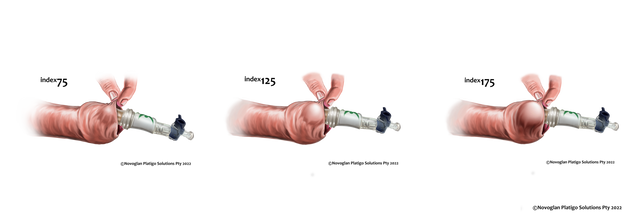
Early Diagnosis and Treatment of Uncomplicated Phimosis by General Practitioners
Introduction:
- Ranges from mild (partial retraction) to severe (pinhole phimosis).
- In Australia, ~ 30% of men referred to urology clinics for phimosis review are diagnosed as uncomplicated that have not responded to topical steroids
- Often face long wait-times for non-urgent circumcision in public hospitals
- Published clinical research has established the Novoglan Non-Surgical Phimosis Treatment Kit as a viable alternative for all grades of uncomplicated Phimosis.

Method:
Comparative review conducted of:
- independent multi-site clinical trial with selected patients
- post-marketing surveillance studies into the Novoglan Non-Surgical foreskin tissue expander medical device
Evaluation of treatment:
- Efficacy
- Safety
- Tolerability

Results:
Post-marketing study:
- 93.5% reported successful treatment outcomes
- 91.8% finding the device easy to use
- 85.3% reported positive impacts on mental wellbeing and sexual health.
- 12.7 % reported mild to moderate pain on initial use
Clinical trial:
- 90% of participants showed improvement in foreskin retraction
- 95% experiencing reduced level of anxiety & over 60% patients
- reported reduced pain/discomfort during sex
- 95% satisfaction associated with sex and enhanced mental health post treatment.
- 15% reported minor side effects that resolved during ongoing treatment
Conclusion:
- The findings supports the reliability of both studies.
- The Novoglan device demonstrates high efficacy and patient satisfaction in treating uncomplicated phimosis, without surgery and with minimal side effects.
At early diagnosis, General Practitioners:
- can offer patients an effective at-home non-surgical first-line treatment option
- may reduce need for circumcision, alleviating pressure on public hospital waiting lists
- should consider the Novoglan device when, upon visual clinical examination, the patient has approximately >80% healthy foreskin tissue, necessary for effective tissue expansion.
- Complications presented as moderate to severe scarring, BXO plaques, or suspicious lesions should be referred to a urologist
Authors: Dmitry Polikarpov, Eric Chung, Hubert Mazure, Andrew James, Hassan Doosti, Douglas Campbell, David Gillatt








